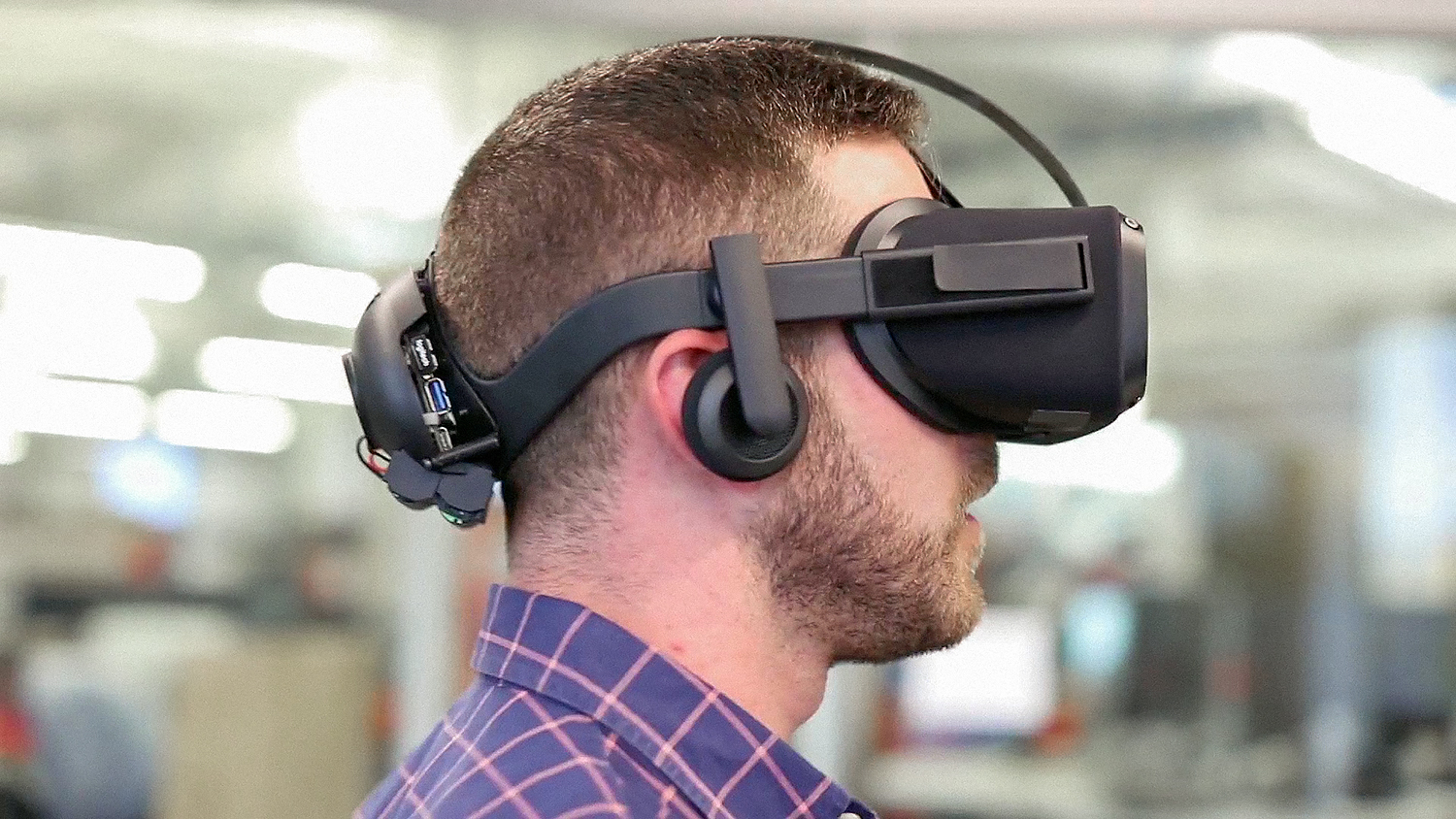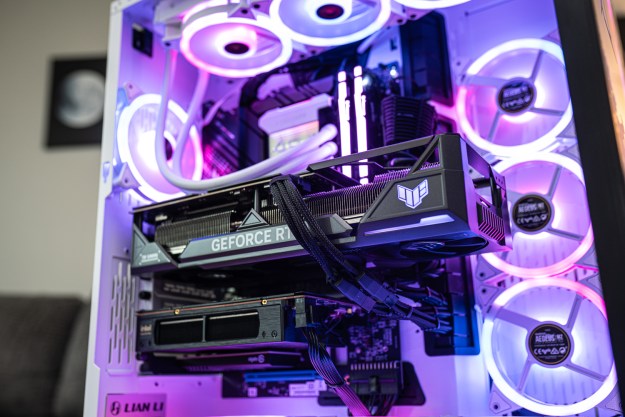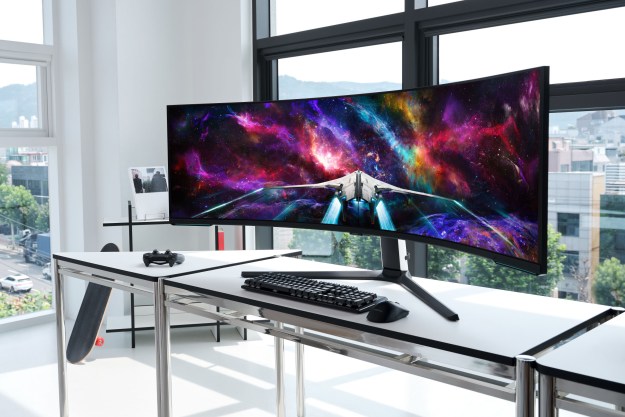A number of innovations come together to power Intel’s Project Alloy, a wireless virtual reality headset. The first generation version has two RealSense cameras for tracking and room localization, an Intel Atom processor for vision processing, and the best available Wi-Fi tech to communicate with the host computer. It’s an ambitious project, maybe too ambitious, even for a silicon giant.
To be clear, the first generation Alloy we spent time with at CES is a very early design concept, and not one Intel plans to bring to market. That role will be filled by the Alloy Gen 2, which will cut down to one RealSense camera, and will replace the Atom chip with a dedicated Movidius motion coprocessor. Even that likely won’t be a product Intel itself sells for long. This technology is destined for partner headsets.
Its implications in the VR marketplace are much larger. You’ll have trouble finding anyone who argues that untethered and standalone headsets aren’t the future of the industry. Cutting the cord is one of a few major hurdles on our way to perfect immersion, but it still has a ways to go.
Where we are today
For now, Alloy is what Intel has, and it’s a little rough. The clarity of the headset wasn’t great, but that’s to be expected from a preview version of a headset. The real issue was tracking. Alloy scans the room ahead of time and creates a map, allowing it to replace the furniture and objects in the room with digital game objects.
Unfortunately, it didn’t quite line things up correctly, and we found ourselves knocking knees and tripping over invisible objects frequently. The motion controller worked relative to where we held it, but didn’t associate correctly for point-and-click operation, and moving it outside a small area caused it to skip around and jutter.
That’s not to say it’s all bad. If anyone is going to solve the problem of heavy cables connecting high-end HMDs, it should be Intel. The chip manufacturer has access to powerful RealSense cameras, infinite control over its own processors, and employees engineers experience with building platforms from the ground up. But Intel is not the only company trying to crack the secret of wireless VR.
Oculus has an early concept, as well, the Santa Cruz protoype, which we saw at Oculus Connect this year. Like Alloy, Santa Cruz packs all of the necessary hardware inside the headset itself, and uses four cameras embedded in the front for tracking.
When we spent time with the wireless HMD, it was clearly very early in the design process. It looked like a Rift headset, with a set of batteries and exposed circuit boards attached by tape. That version of the headset worked remarkably well, at least where tracking is concerned.
Holographic, and the future
Speaking of increasingly specific hardware, Windows Holographic is right around the corner, promising to bring everyone’s favorite OS to the mixed reality world. It’s another huge step towards solidifying the AR/VR community, but like Alloy, the HoloLens itself isn’t necessarily the most important part of that evolution.
In the case of Windows Holographic, the partner headsets are likely to be much more common than Microsoft’s likely-expensive option. It’s also the first true full platform for productivity and computing in VR, although there are alternatives for a few programs that bridge the gap. The ultimate goal there is standalone computing, and more headsets means more options.
You couldn’t walk two booths at CES this year without seeing a VR headset of some sort. Whether it was an HTC Vive or a Gear VR, last year’s hottest demo has become the norm, but that doesn’t mean work on the format is done. Wireless and untethered headsets, along with mobile phone-powered options that are growing more powerful every day, are going to continue to define most users’ interaction with VR.



